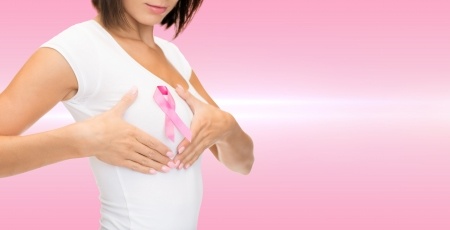 Non-cancerous breast lumps are common. In fact, approximately 8 out of every 10 breast lumps turn out to be benign or non-malignant.
Non-cancerous breast lumps are common. In fact, approximately 8 out of every 10 breast lumps turn out to be benign or non-malignant.Understanding non-cancerous breast lumps
It can be frightening to discover a lump in the breast, but there are many reasons that such lumps develop and most of these lumps are not serious.
The female breast is made-up of glands, ducts, tissue and fat. Breast changes can be linked to hormones, aging or other conditions. Breast conditions associated with lumps include:
- Fibrosis– Some women have lumps in the breast tissue of one or both breasts. These lumps fluctuate with hormonal changes and often grow larger right before menstruation.
- Cysts – Small sacs sometimes form due to fibrocystic changes, blockages or glandular changes. The sacs fill with fluid causing a lump to form. Cysts are often tender.
- Infection – mastitis is an infection that develops when bacteria gets into breast tissue through the nipple. Lumps in mastitis are often warm and tender.
- Benign Breast Tumors – These non-cancerous breast lumps are solid and do not contain fluid. And while the tumors themselves are non-cancerous, some conditions that cause the growths are associated with an increased risk of breast cancer. These conditions include papillomas and atypical hyperplasia.
Treatment of non-cancerous breast lumps
Some non-cancerous breast lumps are harmless do not require treatment, but it’s important to have all lumps examined by your gynecologist, especially if the lump is newly developed or associated with other symptoms such as redness, warmth or dimpled skin.
Your OBGYN can treat non-malignant breast cysts that don’t go away on their own through fine needle aspiration. During this in-office procedure, a needle is inserted into the cyst and the contents removed, causing it to collapse and resolve.
Some lumps, including fibroadenomas and intraductal papillomas, require surgical removal.
Lumps caused by infection (mastitis) may resolve with supportive care such as warm packs or hot showers, but, if symptoms persist, your gynecologist may prescribe antibiotics.
Breast Care Tips
Routine self breast exams will help you to become familiar with your breasts so that you can recognize changes quickly.
Starting at age 40, yearly mammograms are recommended and should continue as long as a woman is in good health. A clinical breast exam (performed by your gynecologist) should be performed yearly starting at the age of 21.
Women with a family history of breast cancer or those who are considered high-risk should talk with their OBGYN about additional tests or earlier screening.
